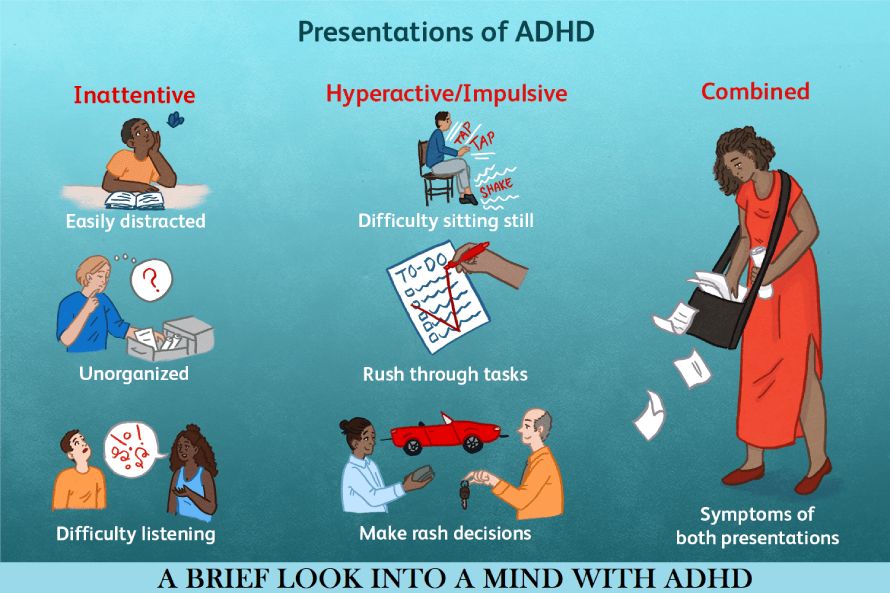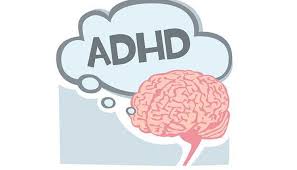
Understanding ADHD: How to treat the disorder?
What is ADHD?
Attention Deficit Hyperactivity Disorder is a neurodevelopmental type of mental disorder. People with this disorder have trouble paying attention, acting without regrets, and doing excessive activity, which is not otherwise appropriate. Some people with ADHD also have difficulty regulating emotions. For diagnosis, the signs and symptoms should appear before an individual is twelve years old, cause problems in at least two environments such as home, school, or recreational activities, and be present for more than the duration of six months.
Children with ADHD have problems paying attention which may result in poor school and academic performance. Additionally, the presence of ADHD at an early age may also cause other mental disorders and substance abuse.
Despite being the most commonly diagnosed mental disorder in children, the exact cause of the condition is still unknown in most of the cases. However, genetic factors make up about 75% of the risk of disorder. Environmental hazards leading to ADHD include nicotine exposure during pregnancy. The style of parenting or discipline has nothing to do with ADHD.

Attention deficit hyperactivity disorder affects about 5-10% of children when diagnosed through the DSM-5 criteria and 1-3% when diagnosed through the ICD-10 tests.
As of 2015, about 51.1 million people globally have ADHD. Boys have approximately two times more cases of the disorder than girls; however, people often overlook the symptoms in girls as their ADHD symptoms differ from those of boys.
About 30-50% of people diagnosed with ADHD in their childhood continue to have some or all the symptoms in adulthood, and about 3-5% of individuals have this condition. Adults have inner restlessness rather than hyperactivity. Adult ADHD patients often have coping skills that make up for some of their impairments. The disorder is not easy to tell apart from other conditions, as well as the normal range of behaviors.
American guidelines recommend behavioral management as the first-line treatment for preschool-aged children and medications along with behavioral therapy after that. Stimulant treatment is useful for more than 14 months; however, it may cause potentially severe side effects, and its long-term effectiveness is still unclear.
Past cases of ADHD
CDC parent surveys and health care claims help understand diagnosis and treatment patterns for ADHD. Millions of United States children have ADHD. The estimated approximate number of children ever diagnosed with the disorder, according to the National Parent Survey 2016 is 6.1 million (approximately 9.4%), including:
- 388,000 children between 2-5 years
- 4 million children between 6-11 years
- 3 million children between 12-17 years
Boys are more likely to have ADHD than girls, with 12.9% compared to 5.6%. The number of American children ever diagnosed with ADHD changes over time.

Many children with the disorder also have other mental health conditions. According to the National Parent Survey 2016, every 6 in 10 children with ADHD have at least one other emotional, mental, or behavioral disorder, as the statistics say:
- About 5 in 10 children have a conduct or behavior problem
- About 3 in 10 children had anxiety
Other conditions that affect children with ADHD include autism spectrum disorder, depression, and Tourette Syndrome.
Symptoms of ADHD
ADHD can be one of the three types: hyperactive/impulsive type, inattentive type, or combined type. Both types of disorders have different symptoms.
Inattentive type disorder has at least six of the following symptoms for children and at least five for people above 17 years of age:
- Problems staying focused on tasks such as during conversations or lectures
- Inability to pay attention to details
- Make careless mistakes
- Inability to follow through
- Problems organizing work and tasks
- Dislike or avoid tasks requiring sustained mental effort
- Loses daily life things such as books, keys, cell phones, etc.
- Easy distraction
- Forget daily life tasks
Hyperactive/impulsive type disorder has at least six of the following symptoms for children or at least five for people above 17 years of age:
- Taps feats or hands continuously
- Not able to stay seated at school, college, or workplace
- Runs or climbs inappropriately
- Not ready to play or do activities quietly
- Always on the go
- Talks too much
- Interrupts others
- Difficulty waiting for the turn
- Blurt out an answer before a question
It is usual for children to have problems focusing and behaving several times. However, ADHD children do not just grow out of these behaviors, as their symptoms continue for months and in different settings. The common symptoms occurring in children with ADHD include:
- A lot of daydreaming
- Forgetting or losing things
- Fidgeting or squirming
- Talking too much
- Making careless mistakes
- Taking unnecessary risks
- Having a hard time resisting the temptation
- Having problems taking turns
- Difficulty in getting along with others
How to treat ADHD?
For most people, doctors prefer to treat ADHD with a combination of behavior therapy and medications. In preschool-aged children with ADHD, behavioral therapy, particularly training for parents, is preferable as the first-line treatment before trying remedies. Good treatment plans include close monitoring, regular follow-ups, and making required changes along the way.
https://knowyourpill.com/product/adderall-30mg/
Being healthy is essential for everyone, especially children. Children with ADHD should have a healthy lifestyle, along with behavior therapy and medication. Having a healthy lifestyle makes it easier for a child to deal with ADHD symptoms. Some healthy behaviors to help manage ADHD symptoms include:
- Taking part in daily physical activities according to age
- Getting a proper amount of sleep every night
- Limiting regular screen times from phones, computers, TVs, and other electronics
- Developing a healthy diet and eating habits
Treatment for the disorder helps relieve its symptoms and makes the condition much less of a day-to-day problem. A specialist, such as a pediatrician or a psychiatrist, usually arranges its treatment.
Medicines available for the treatment of ADHD
Medications help reduce the symptoms of hyperactivity, impulsivity, and inattentiveness in children and adults with ADHD. However, medicines have risks and side effects, so it is important to know what medication for ADHD can and can’t do.
ADHD medicines help improve the ability to concentrate, plan, control impulses, and follow through on tasks. However, they may have associated risks. Even when medications are working correctly, a person with ADHD may struggle with emotional problems, forgetfulness, disorganization, social awkwardness, relationship difficulties, and distractibility. That is why it is crucial to make specific lifestyle changes such as regular exercise, sufficient sleep, and a healthy diet.
Healthcare providers prescribe stimulants for ADHD symptoms. They are the most common types of medications prescribed for the condition. They have the best record for treating ADHD, and many kinds of research back their effectiveness. Stimulants class of medications include amphetamines, methylphenidate, and lisdexamfetamine.
Stimulants are useful in treating ADHD work by increasing dopamine levels in the brain. Dopamine is a neurotransmitter associated with pleasure, motivation, movement, and attention.
ADHD stimulant medications come in both short and long-acting dosages. Short-acting ADHD medicines reach their peak effects after several hours and are for 2-3 times daily use. Long-acting or extended-release stimulant medicines last for about 8-12 hours and are for once-a-day use.
Which are some famous personalities reported to have ADHD?
ADHD is a common condition and many celebrities like the popular Olympian Michael Phelps, dancing star Karina Smirnoff, America’s Got Talent’s host Howie Mandel, Maroon 5 frontman Adam Levine, multiple Grammy awards winner Justin Timberlake, hotel heiress Paris Hilton, Olympic gymnast Simone Biles, singer, and songwriter Solange Knowles, and many others have ADHD.
A list of famous personalities with ADHD includes:
- Emma Watson
- Zooey Deschanel
- Lisa Ling
- Audra McDonald
- Jessica McCabe
- Cammi Granato
- Mel B
- Erin Ellis
- Jamie Oliver
- Ty Pennington
- Luke Jacobz
- Channing Tatum
- Ryan Gosling
It’s okay if you are suffering from ADHD. In fact, it is more than okay so don’t let ADHD bring you down.
